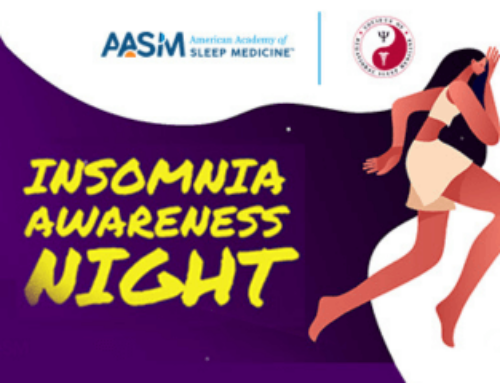WESTCHESTER, IL – A study in the Dec.1 issue of the journal SLEEP suggests that changes in children’s sleep patterns that typically occur between the ages of 11 and 12 years are evident before the physical changes associated with the onset of puberty.
Results show that over the two-year course of the study, sleep onset was significantly delayed by an average of 50 minutes, and sleep time was significantly reduced by an average of 37 minutes. Girls had higher sleep efficiency and reported fewer night wakings than boys. Initial levels of sleep predicted an increase in pubertal development over time, whereas there was no similar prediction in the opposite direction. According to the authors, this suggests that the neurobehavioral changes associated with puberty may be seen earlier in measures of sleep organization than in bodily changes.
Lead author Avi Sadeh, D.Sc, professor of psychology at Tel Aviv University in Israel, said that biological factors have a significant influence on sleep during puberty; however, psychosocial issues such as school demands, social activities and technological distractions can lead to the development of bad sleep habits. Therefore, parents and educators can play an important role in helping children understand how to prioritize sleep as they grow and mature.
“It is very important for parents to be aware of the importance of sleep to their developing teenager and to maintain their supervision throughout the adolescent years,” said Sadeh. “School health education should also provide children with compelling information on how insufficient sleep compromises their well-being, psychological functioning and school achievements.”
According to the authors, sleep-wake organization undergoes significant reorganization during the transition to adolescence. The main changes include a delayed sleep phase, which involves a tendency for later bedtimes and rise times; shorter sleep, which is associated with increased levels of daytime sleepiness; and irregular sleep patterns, which involve sleeping very little on weekdays and sleeping longer during weekends to partially compensate for this sleep loss. During maturation adolescents also develop greater tolerance to sleep deprivation or extended wakefulness.
Data from 94 children (41 boys and 53 girls) were collected from a larger study on sleep and neurobehavioral functioning during the transition to puberty. Children were recruited from regular classes of five different elementary schools in the Tel Aviv area. At first assessment the age range was about 10 years to 11 years. Each child completed a number of questionnaires, including the Sexual Maturation Scale (SMS) and the Puberty Development Scale (PDS) for pubertal development assessment. All children were healthy with no chronic medical or psychological problems.
Sleep-wake patterns were observed subjectively with a sleep diary and objectively using an actigraph, which the children wore on their wrist. The same assessment was repeated, at a similar time of year, for two successive years. Eighty-two children completed the second assessment, and 72 completed the third assessment.
The authors noted that Israel has a six-day school week, with Friday being the only day that is not followed by school. As expected, significant differences were found between sleep on Friday nights and sleep on school nights. On Fridays, sleep onset was delayed, sleep time was extended and sleep quality was poorer in comparison with school nights. These differences were not associated with puberty status or gender, suggesting that the tendency for weekend compensatory sleep is relatively steady over the period of early adolescence.
According to the authors, a deeper understanding of the interrelationships between puberty and sleep changes may provide new insights into the emergence of vulnerabilities for behavioral and emotional health problems in early adolescence, which could improve prevention and early intervention efforts.
SLEEP is the official journal of the Associated Professional Sleep Societies, LLC (APSS), a joint venture of the American Academy of Sleep Medicine and the Sleep Research Society. The APSS publishes original findings in areas pertaining to sleep and circadian rhythms. SLEEP, a peer-reviewed scientific and medical journal, publishes 12 regular issues and 1 issue comprising the abstracts presented at the SLEEP Meeting of the APSS.
For a copy of the study, “Sleep and the Transition to Adolescence: A Longitudinal Study,” or to arrange an interview with the study’s author, please contact the AASM at media@aasm.org.
AASM is a professional membership organization dedicated to the advancement of sleep medicine and sleep-related research. As the national accrediting body for sleep disorders centers and laboratories for sleep related breathing disorders, the AASM promotes the highest standards of patient care. The organization serves its members and advances the field of sleep health care by setting the clinical standards for the field of sleep medicine, advocating for recognition, diagnosis and treatment of sleep disorders, educating professionals dedicated to providing optimal sleep health care and fostering the development and application of scientific knowledge.
###




